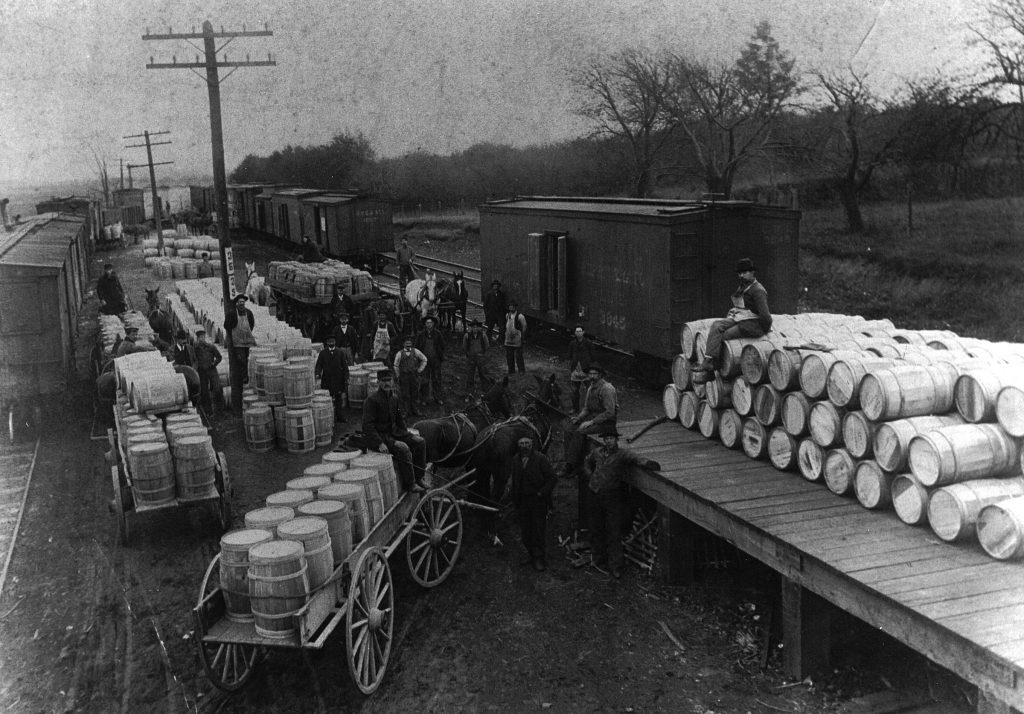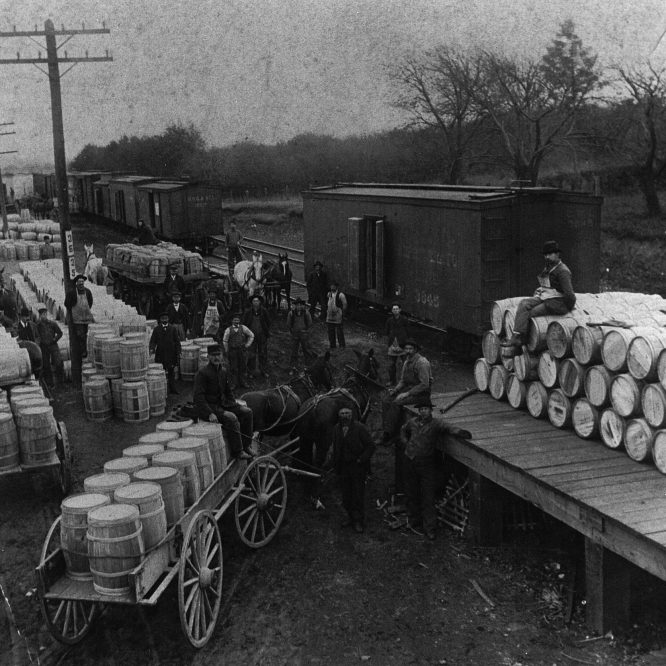Vol. 4, No. 40
October is National Apple Month! This photograph, likely taken in the latter quarter of the 19th century, shows the New York Central Railroad Depot located at Knowlesville. This particular image was taken east of the Rt. 31 Bridge that crosses over the railroad tracks; the photographer has pointed his camera to the southeast. A number of horse-drawn wagons are pulling loads of apples to be loaded into refrigerator cars positioned along the tracks.
In the earliest years of the county’s history, wheat was the primary product shipped out of the area. The opening of the Erie Canal in 1825 drastically cut shipping rates for grains and produce, but demands for apples increased gradually starting around 1845. That increase in demand led Isaac Signor to include the following account of apple orchards in Landmarks of Orleans County, New York published in 1894;
“The fruit has flourished exceedingly in most parts of the county, the climatic influence of the winds, which from the north, northwest, and northeast, pass over open water before striking this territory, becoming thereby tempered and raising the average of winter temperature, and at the same time serving as protection against late spring and early autumn frosts. The atmosphere of the county is also comparatively dry and the rainfall light, while the cool autumn winds from the lake region retard the ripening of winter fruits, greatly enhancing the value of the apples.”
This value averaged around $1.50 per barrel at the time Signor published this account. Several years earlier prices per barrel hovered around $1.40, but the Medina Daily Register published a rather unusual account of apple sales near Knowlesville. In October of 1891, produce dealers in Medina were offering farmers around $1.40 per barrel while apple “sharks” in Knowlesville “had the gall” to offer farmers $1.00 per barrel. A handful of unknowing farmers sold their apples to the deceitful dealers, but the majority hauled their load to Medina to cash in on the fair price.
Another local farmer drove to Knowlesville “…with a lot of apples in the saddest collection of barrels ever used to pack fruit in. The barrels had been stored away in the hen coop for a number of years and the hens had used them as a roosting place. They were of the poorest quality when new and were full of holes which the great-souled farmer had covered by nailing shingles over them.” The “sharks” refused to pay the farmer the $1.00 per barrel rate they had offered the others. Rather incensed, the farmer told his wife’s cousin of his misfortune and the latter chose to “…jump on the Knowlesville fruit buyers…” The verbal scolding encouraged one dealer to offer “…a trifle more than the even dollar.”
Fluctuations in crop yield could produce gains upwards of $1,000,000 or cause near-failure for area farmers. The 1896 growing season saw one of the most fruitful harvests in local history, increasing shipments out of the county while driving up demands for barrels. John Higgins of Knowlesville operated a nearby cooperage and recalled manufacturing over 52,000 barrels in the height of that demand.


